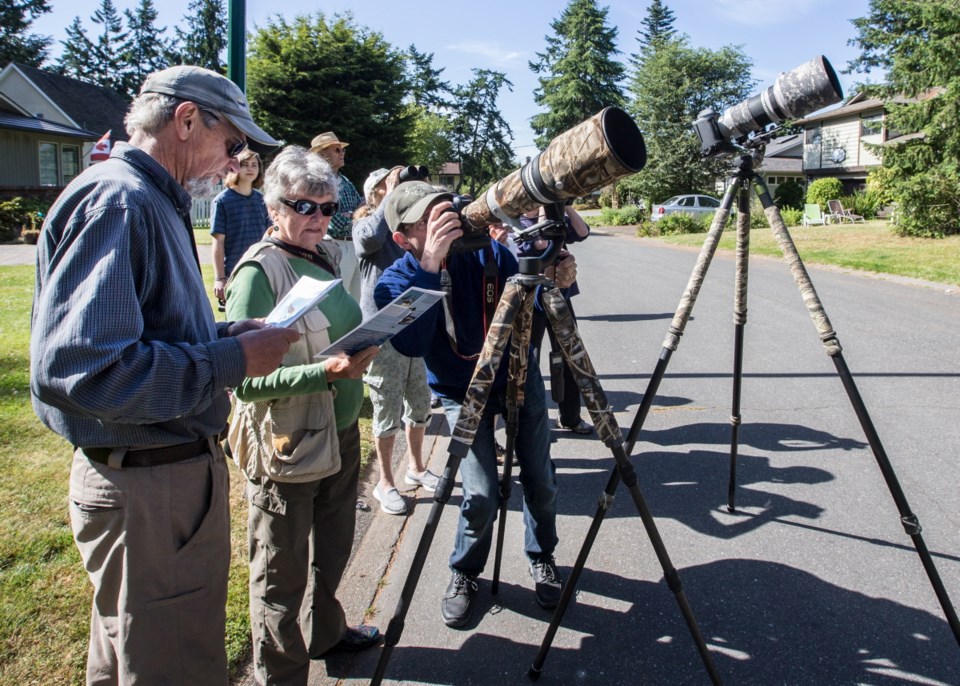The story of a red-tailed hawk fostered by a family of bald eagles in Sidney is reaching beyond the world of bird watchers and wildlife biologists.
Rare migrant birds often attract enthusiastic hobbyists who will travel great distances to gain another checkmark on their life lists of species spotted.
But this hawk is different. It’s getting interest from around the world, including the BBC, and from those who normally don’t care about birds.
For example, Mady Reed, 16, of Pender Island, a student at Gulf Islands Secondary School, regularly sees eagles near home and has little interest in birds in general. During a visit on Tuesday, she made a special effort to come to the eagle nest for a peek.
“I’ve never heard of this kind of thing happening before,” she said.
“I’ve been reading about it and it’s just so interesting.”
The red-tailed hawk chick, which is lighter in colour and smaller than its nestmates, took its first flight last Friday, travelling about 30 metres from the nest it shares with two adult eagles and three eaglets.
It was first spotted in late May in a long-established eagle nest on Summerset Place on Roberts Bay. Initially, two hawk chicks were spotted, but the second has disappeared.
Firing up the interest is the mystery of just how a hawk chick ended up being fostered by the eagles.
“It’s a fairy tale,” said Terry Venables, who has spent many days with a long-lens camera near the nest hoping for a good picture. “It’s just so unlikely.”
Venables said he has met people from as far away as Texas who have come to get a look of the unlikely group.
A resident of the Saanich Peninsula who works as a goldsmith, Venables has been honing his craft as a wildlife photographer, posting images and keeping a blog. Before the-hawk-among-eagles story, his blog would get perhaps 30 views on a good day. Now, he’s getting views by the thousands.
“This story has gone international,” he said.
Suzanne Huot, a keen birder, has also been watching the nest regularly.
“It’s so unique to think of an eagle raising somebody else’s chick,” she said.
“The big thing is now everybody is hoping [the hawk] will make it now because everybody is so involved.”
Kerry Finley, a wildlife biologist whose property is home to the eagle tree, said he believes part of the interest has been generated by “sensationalism.”
Finley scoffs at the widespread theory that the hawk chicks were carried by the eagles as prey or food for the eaglets, but were somehow not killed.
Once in the nest, the theory goes, the hawklets started to beg, and the parents responded instinctually by putting food into their gaping mouths.
Finley said it’s more plausible that a red-tailed hawk somehow laid eggs in the eagle nest and they subsequently hatched, noting that one of his neighbours spotted a red-tail in the area in May.
Venables, however, is content to just let the mystery stand: “Nobody will ever really know.”



